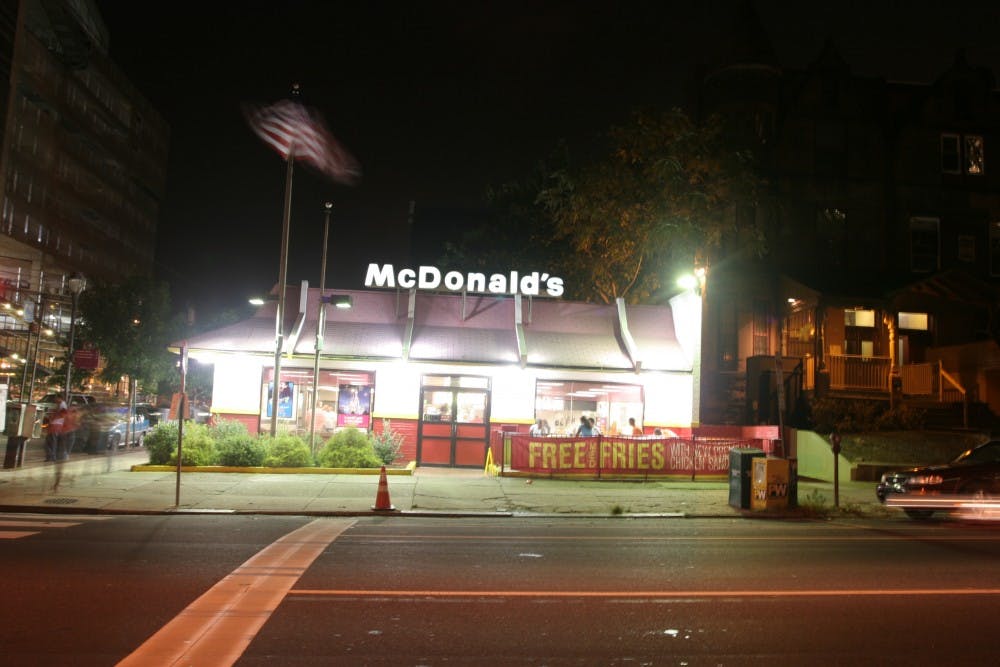This article was originally published as part of the joke issue on 12.5.2013
In his popular “McDonald’s” series, conceptual artist and circus performer Ronald McDonald has created a vibrant visual vocabulary that’s as relevant today as it was when his first piece opened up in 1940. Through the decades, Ronald’s pieces have spread like wildfire across America, interacting with visitors in ways that leave their bellies filled with contentment and saturated fats. We’ve been fortunate to have one of his more recent pieces so close to our hearts (and frats): Ronald’s very own “McDonald’s: 40th and Walnut.”
In “McDonald’s: 40th and Walnut,” Ronald addresses the subject of contemporary American society through the lens of an indisputable national emblem: the hamburger and fries served in a semi–greaseproof cardboard box and paper bag. Dominating the theme are highly saturated reds and yellows paired with muted brown pastels inside. The décor seems suitable to an American audience with severe ADHD. The space is framed by the neon–lit ceiling of an office building and an arabesque terracotta–tiled floor. Abstract artworks reminiscent of cornfields hang next to pin–ups of the “Dollar Menu” centerfolds.
Ronald’s use of multimedia is integral to the impact of “McDonald’s: 40th and Walnut.” The visual experience of this interactive work is supplemented by a variety of sounds and smells which serve to fully immerse the viewer. Upon entering, we are immediately greeted by the scent of convenience. Muzak filters through the restaurant as if all the customers are collectively holding for a phone call we know will never go through. There’s also a sense of anonymity among viewers of “McDonald’s: 40th and Walnut” that can make it feel like an airport—although we all know it’s a destination.
Ronald’s most audacious juxtaposition is between the viewers attracted at midday and midnight. Indifferent West Philadelphians pack the house for lunch as, later, inebriated students stumble in with midnight munchies. In this sense, “McDonald’s: 40th and Walnut” unites two disparate demographics. It is a diagnosis of societal division, but, possibly, also a remedy.
Ronald isn’t unlike other conceptual artists in how many viewers fail to recognize this installation as a work of art. They only see it for its functional practicality. Like Duchamp’s urinal, viewers like to pee in it for free at two a.m. By the Duchamp’s standards, it’s a good piece of art, and we can see that Penn students are certainly lovin’ it.

